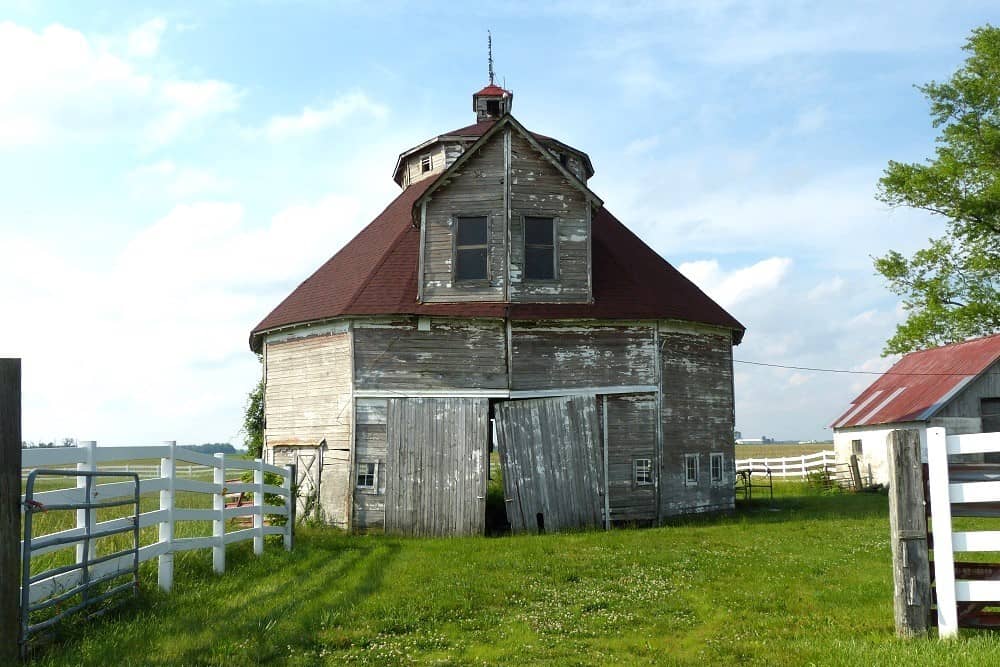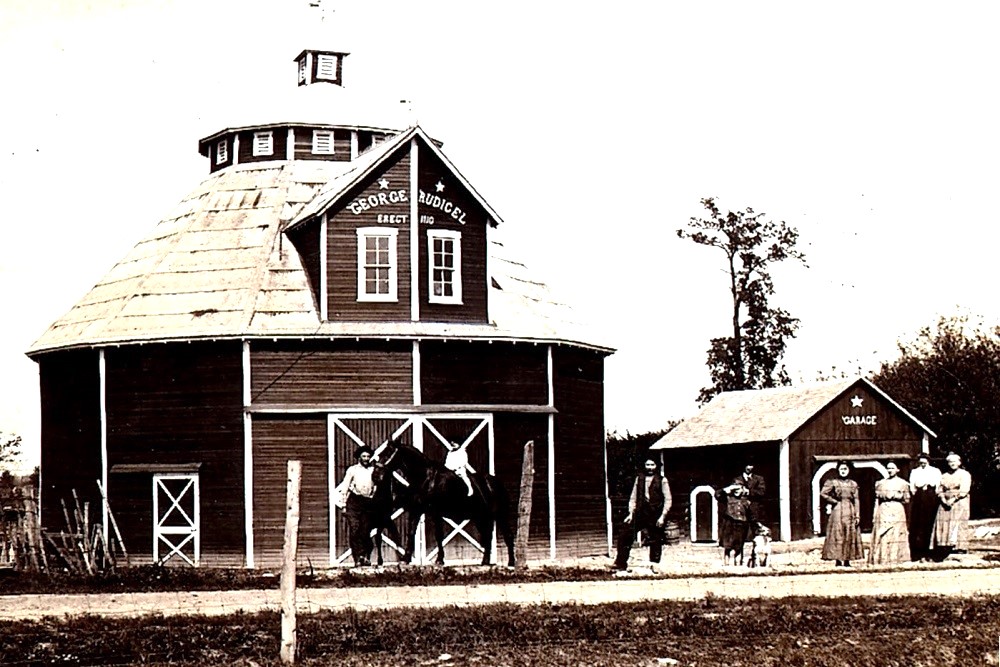Indiana has about 20,000 historic wooden barns scattered around the state, but many of them are quickly falling into disrepair. That’s why the Indiana Barn Foundation is bringing awareness to the efforts to save these cultural landmarks.
“Let’s give these old barns a chance because they tell us a lot about our agricultural history, and a lot of cases they tell us a lot about our family and community history too,” says Kent Yeager, President of the Indiana Barn Foundation. The organization was founded in 2014 by the late Mauri Williamson, a retired Purdue ag professor who sought to preserve Indiana’s farm history and heritage.
Last weekend, the organization hosted an historic barn tour in Shelby County that featured one unique polygonal barn called the Rudicel-Montgomery Barn, which is owned by the Montgomery family and built near Waldron in 1910.

“This barn has 12 sides, which I believe in Indiana there were fewer than 20 of these that ever existed,” according to Yeager. “This particular form of barn is just a very rare thing, and so we wanted to highlight it for the historic value of it—if nothing else, I hope [the Montgomery family] can find a way to use it. It’s got significant historic value to the state, to agriculture, and that’s what a lot of this work is about with these old barns.”One effort that’s been made to keep more of these barns around is that significant property tax deductions are available for barns built before 1950.
“We didn’t want people to have a reason to say, ‘I’m going to let that barn go,’ or ‘I’m going to tear it down so I don’t have to pay property taxes on it.’ At least we eliminated that reason. It’s a small thing in the context of the value of a lot of these barns, but it is important and hopefully people will take advantage of it.”

Yeager says the ultimate goal is to restore as many of these historic barns and create value for them once again. He adds that many barns have already been repurposed into wedding venues, wineries, retail shops and restaurants.
“One of the things that happened is that farm machinery outsized a lot of these barns,” he says. Even people with livestock became very specialized, and so we lost the purpose that some of these barns were originally built, so the more people can do to find another purpose—that is the best thing to maintain them.”
Learn more about the Indiana Barn Foundation at IndianaBarns.org.
CLICK BELOW to hear Hoosier Ag Today’s C.J. Miller chat with Randy Miles, board member and assessor of heritage barns with the Indiana Barn Foundation.

